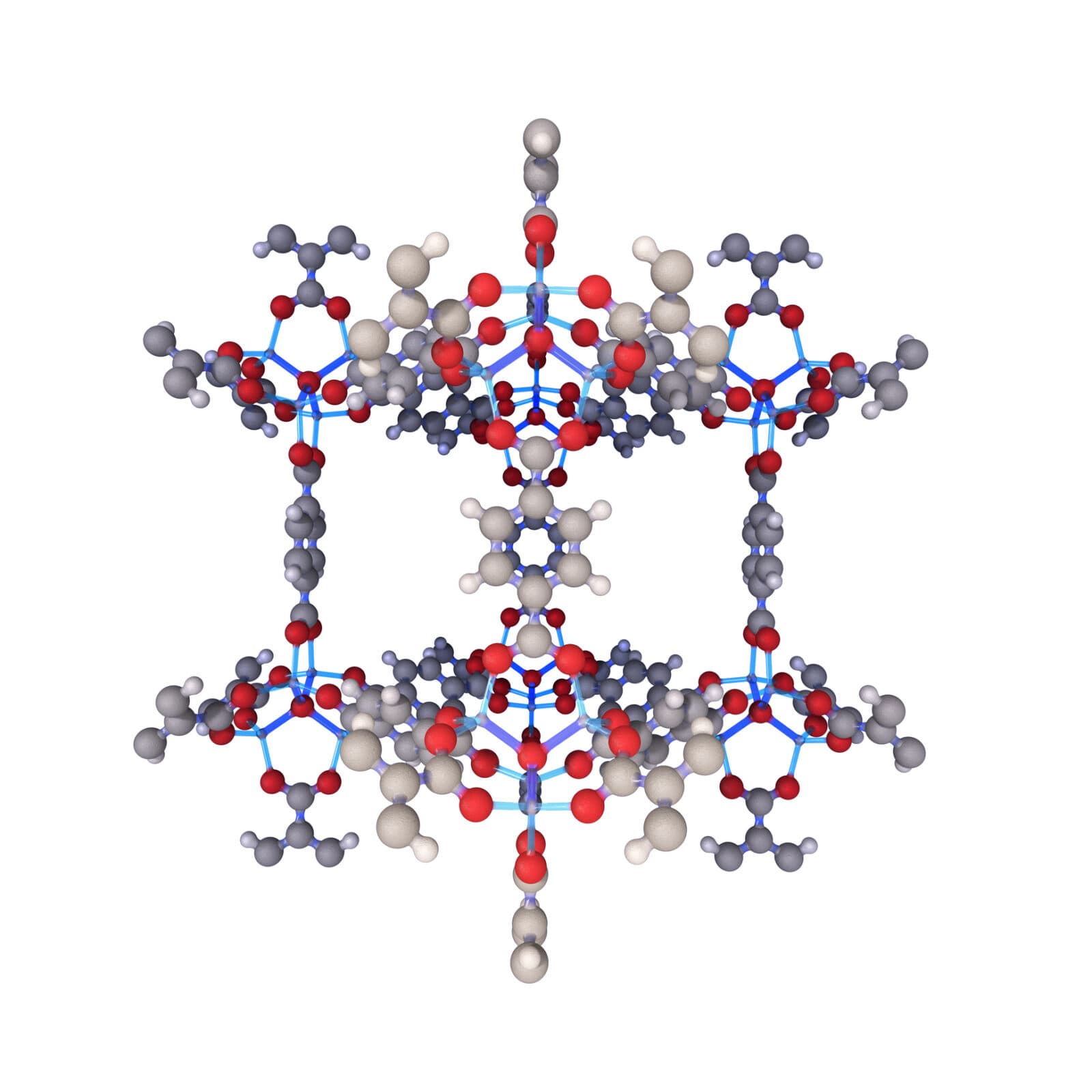Nobel Prize Honors Kavli Institute Co-Director Omar Yaghi
From designer molecules to a more sustainable world

The 2025 Nobel Prize in Chemistry recognized three chemists whose discoveries reimagined what materials can do. Omar Yaghi, co-director of the Kavli Energy NanoSciences Institute (Kavli ENSI) at the University of California, Berkeley, shares the honor with Susumu Kitagawa of Kyoto University and Makoto Fujita of the University of Tokyo “for the development of metal–organic frameworks”—a new molecular architecture that can be designed to trap, separate, or transform molecules, drive chemical reactions, or conduct electricity.
“Omar is an incredible scientist, leader, human being, and friend. He is creative and dogged in his pursuit of scientific excellence,” says Dr. Cynthia Friend, President and CEO of The Kavli Foundation and T.W. Richards Professor Emerita, Harvard University. “His work on metal organic frameworks was a tour-de-force of materials synthesis, which he has followed up with demonstration of their value in sequestering CO2 and harvesting water for arid environments. Omar’s work demonstrates how curiosity-driven research can lead to discoveries with the power to benefit humanity, reflecting the vision of our founder, Fred Kavli.”

More than twenty-five years ago, Yaghi published the structure of a two new crystalline materials built from metal ions connected by organic linkers—now known as metal–organic frameworks (MOFs), and later their all-carbon analogs, covalent–organic frameworks (COFs).
Like a molecular Tinker Toy construction, a MOF’s pattern can be endlessly varied: metal atoms serve as hubs, organic molecules as rods, and together they form open, repeating lattices. What makes these materials remarkable—and Nobel Prize–worthy—is that their structure can be precisely designed. By changing the chemical building blocks, scientists can tailor the framework’s pore size and surface chemistry to perform specific tasks. The result is a highly porous material—up to 90 percent empty space—capable of remarkable selectivity and reactivity. These properties give MOFs extraordinary versatility, from capturing carbon dioxide and storing hydrogen to harvesting water from desert air.
In a 2017 Kavli Foundation roundtable, Yaghi explained why these materials represent a new way of doing chemistry: “If you think about how humans typically do chemistry, it usually involves high temperatures and pressures and produces a lot of waste. With metal–organic frameworks, we can design environments where reactions occur selectively and efficiently—more like nature does.” (Read: Chemistry, Nature Reinvented)
His career also illustrates the perseverance that drives basic science. Reflecting on the skepticism that greeted his early work, Yaghi told The Kavli Foundation, “Since we discovered metal–organic frameworks 25 years ago, I faced a barrage of questions from doubters.… Yet we kept going, because nature is rich and full of surprises.” (Read: Can Nanoscience Quench a Thirsty World?). That curiosity and persistence have reshaped the field of materials chemistry. Today, Yaghi’s frameworks underpin research across hundreds of laboratories designing materials atom-by-atom for sustainability applications. At the Kavli ENSI, he and his colleagues explore how nanoscience can address global challenges in energy, climate, and resource use, delivering on the promise that nanotechnologies can deliver step-change sustainability solutions. Yaghi often points to nature as both teacher and inspiration. As he previously told The Kavli Foundation, “We once dreamed about building like nature. Today, those dreams are becoming part of the realm of the possible.”
Further reading: